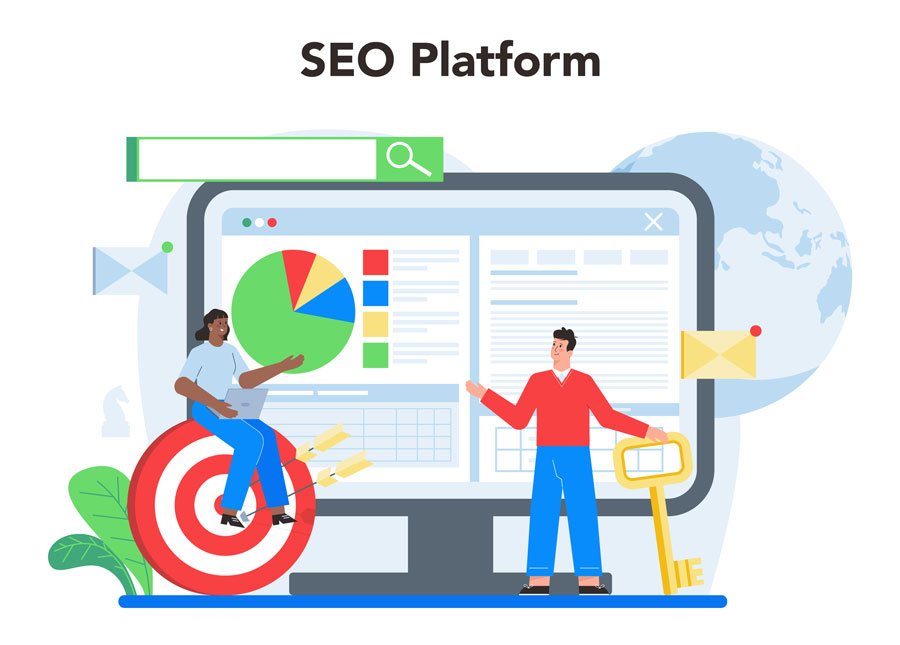Blogs

The Impact of Page Speed on SEO: Tips for Faster Load Times
Page speed refers to the time it takes for a webpage to load completely. It is a critical factor in both user experience and SEO. Search engines like Google consider page speed when ranking websites. Slow load times can lead to higher bounce rates and lower engagement. This blog will delve into the importance of page speed for SEO and provide practical tips for improving load times.
The Importance of Page Speed for SEO
Page speed directly affects user experience. A fast website keeps visitors engaged and reduces bounce rates. Google and other search engines use page speed as a ranking factor. Faster websites often rank higher in search results. Users prefer sites that load quickly. Slow websites can frustrate visitors, leading them to leave.
How Page Speed Affects User Experience
User experience is crucial for website success. Fast-loading pages improve user satisfaction. When users find what they need quickly, they are more likely to stay longer. This increases the chances of conversions and repeat visits. Slow-loading pages, on the other hand, can lead to frustration. Users may leave and never return, harming your website’s performance.
Google’s Focus on Page Speed
Google has been emphasizing page speed for years. In 2010, Google announced that page speed would affect rankings. Since then, the importance of speed has only increased. With the introduction of Core Web Vitals, Google has made speed a key part of its ranking algorithm. Websites that meet these standards are rewarded with better rankings.
Tips To Improve Page Speed
-
Optimize Images:
Large images can slow down your website. Use image compression tools to reduce file sizes without losing quality. Tools like TinyPNG and ImageOptim can help.
-
Enable Browser Caching:
Browser caching stores static files in a user’s browser. This reduces the need to reload the entire page each time a user visits. Configure your server to enable caching.
-
Minimize HTTP Requests:
Each element on your webpage requires an HTTP request. Reduce the number of elements to speed up load times. Combine CSS and JavaScript files to minimize requests.
-
Use a Content Delivery Network (CDN):
A CDN distributes your content across multiple servers worldwide. This reduces the distance data must travel, speeding up load times. Popular CDNs include Cloudflare and Akamai.
-
Optimize CSS and JavaScript:
Minify CSS and JavaScript files to remove unnecessary characters. Tools like UglifyJS and CSSNano can help. Also, place CSS at the top and JavaScript at the bottom of your HTML files.
-
Enable Gzip Compression:
Gzip compresses your website files, reducing their size. Smaller files load faster. Enable Gzip compression on your server to improve load times.
-
Reduce Server Response Time:
Slow server response times can hinder your page speed. Choose a reliable hosting provider and optimize your server settings. Aim for a server response time under 200ms.
-
Use Asynchronous Loading for JavaScript:
Asynchronous loading allows JavaScript to load independently. This prevents it from blocking other elements on the page. Use the “async” attribute in your script tags.
-
Optimize Web Fonts:
Web fonts can slow down your site if not optimized. Use only the fonts you need and limit the number of font weights. Also, consider using font-display: swap to improve rendering.
-
Implement Lazy Loading:
Lazy loading delays the loading of non-essential images and videos until the user scrolls to them. This speeds up the initial load time. Use the “loading” attribute in your HTML tags.
Measuring Page Speed
Measuring your page speed is essential for identifying areas of improvement. Several tools can help you assess your website’s performance:
- Google PageSpeed Insights Google PageSpeed Insights analyzes your website and provides suggestions for improvement. It scores your site on both mobile and desktop performance.
- GTmetrix GTmetrix offers detailed insights into your website’s speed and performance. It provides recommendations for optimization and tracks your site’s performance over time.
- Pingdom Pingdom measures your website’s load time and provides a performance grade. It also offers suggestions for speeding up your site.
- WebPageTest WebPageTest allows you to run speed tests from multiple locations worldwide. It provides a detailed report on your site’s performance and areas for improvement.
The Benefits of Faster Load Times
Improving your page speed offers numerous benefits:
- Better SEO Rankings Faster websites rank higher in search engine results. This increases visibility and drives more traffic to your site.
- Increased Conversions Fast load times lead to better user experience. Satisfied users are more likely to convert, whether it’s making a purchase or filling out a form.
- Lower Bounce Rates Users are less likely to leave a fast-loading website. Lower bounce rates indicate a positive user experience and can improve your rankings.
- Enhanced User Experience A fast website keeps users engaged. They are more likely to explore your content and return in the future.
Conclusion
Page speed is a critical factor in SEO and user experience. Improving your website’s load times can lead to better search rankings, increased conversions, and enhanced user satisfaction. By following the tips outlined in this blog, you can optimize your site for faster load times and reap the benefits of improved performance. Start implementing these strategies today and see the positive impact on your website’s succes
Also Read This: THE IMPACT OF AI ON SEO: CHANGING THE GAME



